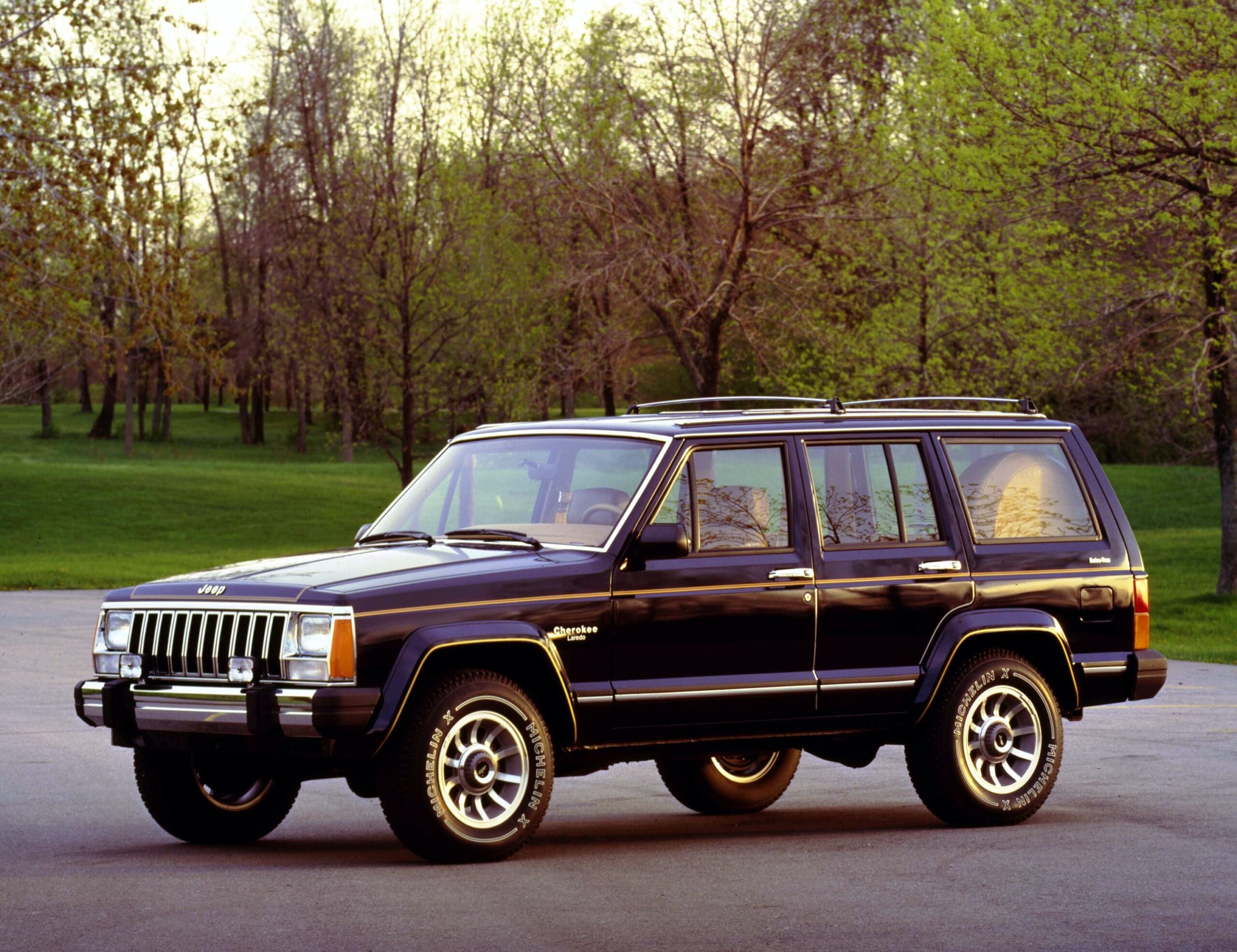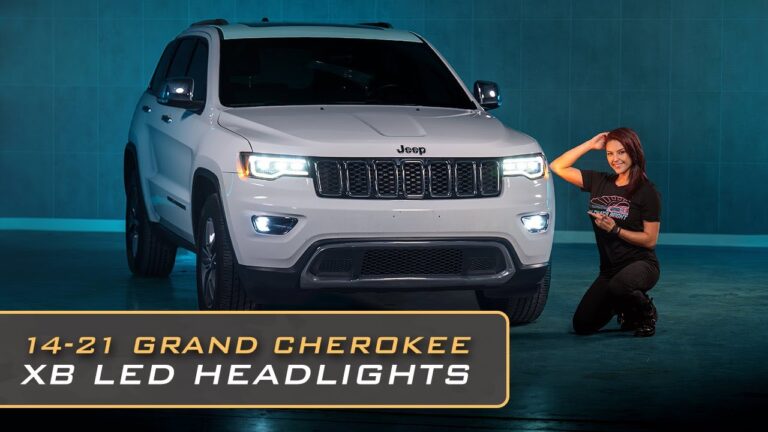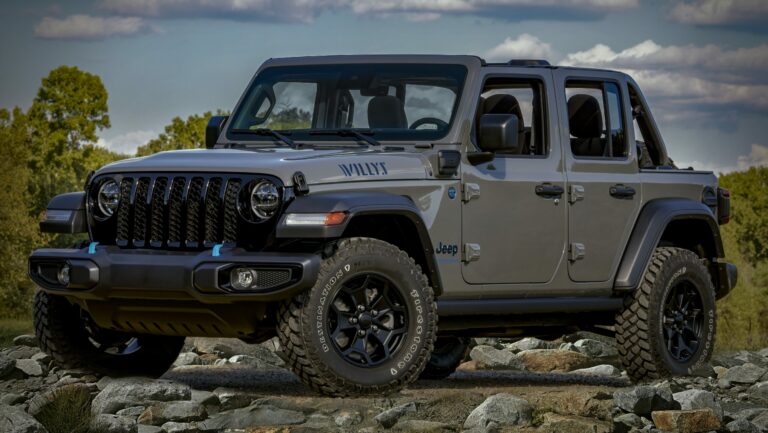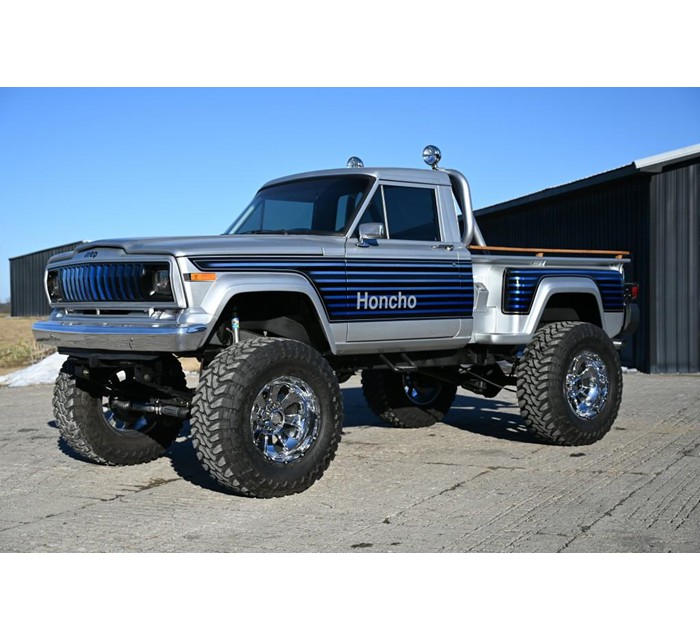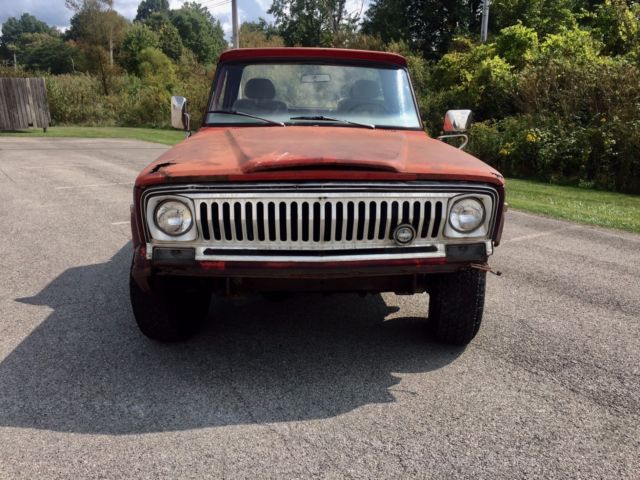Jeep Cherokee XJ: The Unsung Hero of the Off-Road World
Jeep Cherokee XJ: The Unsung Hero of the Off-Road World jeeps.truckstrend.com
The automotive landscape is littered with vehicles that come and go, leaving little more than a fading memory. Then there are those rare few that transcend their utilitarian purpose, evolving into cultural icons and beloved mainstays. The Jeep Cherokee XJ, produced from 1984 to 2001, is unequivocally one such legend. More than just a compact SUV, the XJ carved out its own niche, redefining what a utility vehicle could be: rugged, versatile, surprisingly agile, and eminently capable. It’s a testament to simple, robust engineering that, decades after its inception, the XJ continues to command a loyal following, revered by off-road enthusiasts, budget-conscious adventurers, and everyday drivers alike. Its enduring appeal lies in its straightforward design, legendary reliability, and an almost limitless potential for customization, making it not just a vehicle, but a canvas for exploration and personal expression.
A Brief History and Design Philosophy
Jeep Cherokee XJ: The Unsung Hero of the Off-Road World
The Jeep Cherokee XJ was a groundbreaking vehicle when it debuted in 1984. Developed during American Motors Corporation’s (AMC) ownership of Jeep, it was a radical departure from the larger, body-on-frame SUVs of the era. The XJ pioneered the unibody (monocoque) SUV design, integrating the body and frame into a single structure. This innovative approach resulted in a lighter, more rigid vehicle with improved handling, better fuel economy (for its time), and a lower center of gravity compared to its predecessors.
Designed by a team led by AMC’s chief designer Dick Teague, the XJ’s aesthetic was unapologetically boxy and functional. Its clean lines, flat glass, and compact dimensions belied its rugged capabilities. It was initially offered with a range of engines, but it was the introduction of the legendary 4.0-liter inline-six cylinder engine in 1987 that truly cemented its reputation. The XJ’s design philosophy prioritized practicality, durability, and off-road prowess in a package that was also nimble enough for urban environments. This blend of attributes made it an instant success and set the stage for the compact SUV segment as we know it today.
Why the XJ Endures: Unpacking its Appeal
The longevity of the XJ’s popularity is no accident. Several key factors contribute to its enduring appeal:
- Legendary Reliability (Especially the 4.0L I6): The 4.0-liter "PowerTech" inline-six engine is widely considered one of the most reliable engines ever built. With proper maintenance, it’s not uncommon to see XJs with well over 200,000 or even 300,000 miles still running strong. Its simple, robust design makes it relatively easy to diagnose and repair.
- Unmatched Off-Road Capability (Stock and Modified): Even in stock form, the XJ’s short wheelbase, excellent approach/departure angles, and capable 4WD systems (especially the NP231 Command-Trac) make it a formidable off-roader. Its unibody construction, while initially a concern for some traditionalists, proved incredibly durable and offered surprising articulation.
- Simplicity and Ease of Maintenance: Unlike many modern vehicles laden with complex electronics, the XJ is refreshingly straightforward. This makes it a fantastic vehicle for DIY mechanics and those who prefer to work on their own rigs. Parts are generally inexpensive and widely available.
- Vast Aftermarket Support: Due to its popularity, the aftermarket for the XJ is immense. From lift kits and armor to engine performance upgrades and interior accessories, there’s virtually no limit to what can be done to customize an XJ for any purpose, from daily driving to extreme rock crawling.
- Affordability: While prices have steadily risen for clean examples, the XJ remains one of the most cost-effective ways to get into a highly capable 4×4. The initial purchase price is often low, and maintenance costs are manageable.

Key Powertrains and Drivetrains
The heart of most desirable XJs is the 4.0-liter inline-six engine, available in two main iterations:

- Renix 4.0L (1987-1990): Named after the Renix engine management system, these early 4.0L engines are known for their strong low-end torque. They have a slightly different sensor setup compared to later models.
- High Output (HO) 4.0L (1991-2001): Featuring a revised cylinder head and intake manifold, the HO engine produced more horsepower (190 hp vs. 177 hp) and slightly more torque. It’s generally considered the more desirable version due to its improved performance and simpler Chrysler-based engine management.
While other engines were offered (like the 2.5L I4 and a 2.8L V6 in early models), the 4.0L is by far the most popular and reliable.
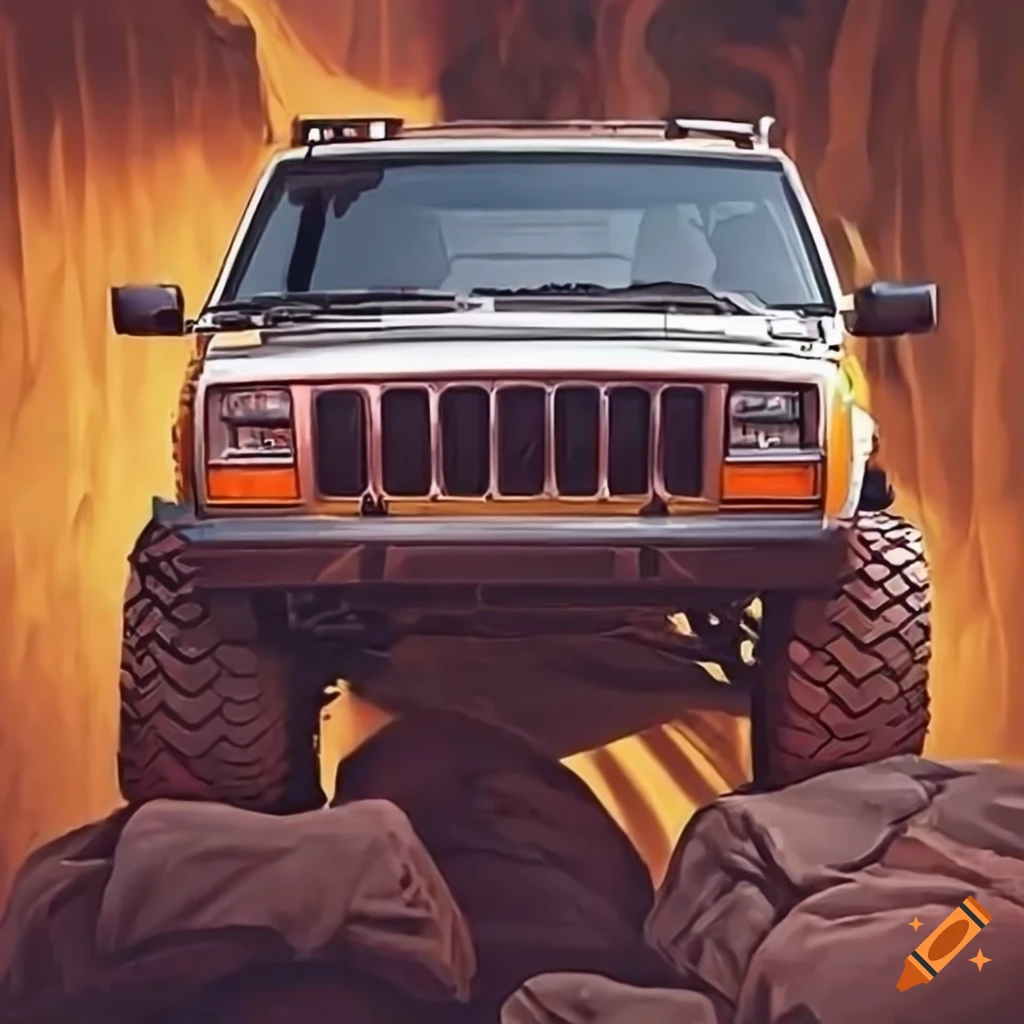
Transmissions:
- AW4 Automatic: Manufactured by Aisin-Warner, this 4-speed automatic transmission is renowned for its durability and smooth shifting. It’s often considered bulletproof and is a popular choice for both daily driving and off-road use.
- AX-15 Manual: A 5-speed manual transmission, also by Aisin, found in 1989-1999 models. It’s a strong, reliable unit favored by those who prefer to row their own gears.
- NV3550 Manual: Introduced in 2000-2001 models, this 5-speed manual replaced the AX-15 and is also a robust transmission.
Transfer Cases:
- NP231 Command-Trac: This is a part-time 4WD system (2H, 4H, N, 4L). It’s the most common and is incredibly strong, making it ideal for dedicated off-road use. It lacks a full-time 4WD option, meaning 4H should only be used on loose surfaces.
- NP242 Selec-Trac: This system offers a full-time 4WD mode (2H, 4 Part-Time, 4 Full-Time, N, 4L). The "4 Full-Time" option is clutch-based and allows for safe use on pavement, making it a more versatile choice for varied conditions. It’s also very robust, though slightly less common than the NP231.
Common Issues and Solutions
While robust, XJs are not without their quirks and common wear points, especially given their age. Understanding these can help with maintenance and purchasing decisions:
- Cooling System: The 4.0L can run hot. Common issues include failing fan clutches, clogged radiators, old water pumps, and sticky thermostats. Solution: Regular coolant flushes, upgrade to a larger radiator, replace components proactively.
- Exhaust Manifold Cracks: A notorious issue, causing a ticking sound (especially on startup) due to expansion and contraction. Solution: Replace with an aftermarket header (often a better design) or a new OEM manifold.
- Rear Main Seal Leaks: A very common oil leak on the 4.0L. While not catastrophic, it can be messy. Solution: Replacement requires dropping the oil pan and often the transmission, but it’s a well-documented DIY job.
- Sagging Rear Leaf Springs: Over time, the rear leaf springs flatten, causing the rear end to sag and reducing ride quality/payload capacity. Solution: Add-a-leaf kits, full leaf pack replacement, or shackle relocation brackets.
- Rust: The unibody construction means rust can be a serious issue, particularly in areas with road salt. Check rocker panels, floorboards, frame rails, and door sills. Solution: Prevention is key (rustproofing). For existing rust, cutting out and welding in new metal is often required for structural areas.
- Electrical Gremlins (especially Renix models): Older wiring, poor grounds, and sensor issues can lead to intermittent problems. Solution: Clean ground points, inspect wiring harnesses, replace failing sensors.
Buying an XJ: What to Look For
Purchasing an XJ requires a keen eye. A thorough pre-purchase inspection is crucial:
- Rust, Rust, Rust: This is paramount. Inspect the rocker panels, floorboards (lift carpets), rear quarter panels, door bottoms, and especially the unibody "frame rails" under the vehicle. Minor surface rust is manageable; structural rust is a red flag.
- Engine Health: Listen for knocking, ticking (exhaust manifold), and excessive lifter noise. Check for oil and coolant leaks. Look at the color of the fluids.
- Transmission and Drivetrain: For automatics, check fluid color (should be red, not brown/burnt) and feel for smooth shifts. For manuals, check clutch engagement. Listen for clunks or grinding from the transfer case or axles during a test drive.
- Suspension: Check for sag (especially in the rear), worn bushings, and leaking shocks. Bounce each corner to check dampening.
- Steering: Check for excessive play in the steering wheel. Inspect tie rods, drag link, and ball joints for wear.
- Electrical: Test all lights, gauges, power windows, HVAC, and radio.
- Interior: While less critical for performance, a well-maintained interior often indicates a cared-for vehicle. Check for water leaks from the windshield or door seals.
- Maintenance Records: Ask for any available service history. This can provide invaluable insight into how the vehicle was cared for.
Modifying Your XJ: A World of Possibilities
The XJ is arguably one of the most customizable 4×4 platforms available. Modifications range from mild to wild:
- Mild (1-2" lift, 30-31" tires): Improves appearance and mild off-road capability. Often achieved with coil spacers and add-a-leafs.
- Moderate (3-4.5" lift, 32-33" tires): The sweet spot for many. Requires new coil springs, full leaf packs or shackle relocation, extended shocks, and often slip yoke eliminator (SYE) and CV driveshaft. Re-gearing axles is highly recommended for optimal performance with larger tires.
- Extreme (4.5"+ lift, 35"+ tires): For serious rock crawling. Requires long-arm suspension kits, heavy-duty steering, axle upgrades (Dana 44 or Dana 60 swaps), custom fabrication, and often a full roll cage. Re-gearing is essential.
Practical Advice:
- Define Your Purpose: Before modifying, decide if it’s a daily driver, weekend warrior, or dedicated trail rig. This will dictate the type and extent of modifications.
- Address Maintenance First: Don’t lift a broken Jeep. Fix any underlying mechanical issues before spending money on upgrades.
- Consider Re-gearing: Larger tires significantly impact acceleration and fuel economy. Re-gearing the axles to match tire size is crucial for restoring performance and reducing strain on the drivetrain.
- Join the Community: Online forums (like NAXJA or Cherokee Forum) are invaluable resources for advice, DIY guides, and parts.
Living with an XJ: Daily Driver vs. Weekend Warrior
The XJ’s versatility means it can fill multiple roles:
- As a Daily Driver: It’s compact enough for city driving and offers decent cargo space. However, don’t expect modern car comforts, stellar fuel economy (typically 15-20 MPG), or a whisper-quiet ride. The ride can be firm, and road noise is noticeable.
- As a Weekend Warrior/Overlander: This is where the XJ truly shines. Its off-road capability, reliability, and ease of repair make it an ideal platform for exploring trails, camping, and overland adventures. The rear cargo area is surprisingly spacious with the seats folded down.
Ultimately, living with an XJ is a commitment to a simpler, more mechanical driving experience. It’s a vehicle that rewards hands-on owners and those who appreciate rugged functionality over creature comforts.
Jeep Cherokee XJ Price Guide (Estimated Ranges)
Please note that XJ prices vary significantly based on year, mileage, condition, maintenance history, modifications, and geographical location. This table provides a general estimate.
| Condition Category | Year Range (Approx.) | Typical Price Range (USD) | Key Factors Influencing Price |
|---|---|---|---|
| Poor/Parts Car | Any (often early) | $500 – $2,000 | Significant rust, major mechanical issues, non-running, heavily abused. |
| Fair/Project | Any | $2,000 – $5,000 | Moderate rust, multiple mechanical issues (running but needs work), high mileage, neglected. |
| Good/Driver | 1991-2001 (HO models) | $5,000 – $10,000 | Minor rust, running well with some minor issues, decent interior/exterior, average mileage. |
| Excellent/Clean | 1996-2001 (Late models) | $10,000 – $18,000+ | Minimal to no rust, well-maintained, low mileage for age, original or tastefully modified, pristine interior. |
| Collector/Show | Any (rare, early, or late) | $18,000 – $30,000+ | Exceptionally low mileage, perfectly preserved, rare trim levels, fully restored to concours condition. |
Important Considerations for Pricing:
- Mileage: Lower mileage generally commands a higher price, but maintenance history is more crucial.
- Maintenance Records: A well-documented service history adds significant value.
- Modifications: Tasteful, well-executed modifications (e.g., quality lift, re-geared axles) can increase value, but poorly done or extreme mods can decrease it.
- Location: XJs in rust-free states (e.g., Southwest US) will typically be more expensive due to better condition.
- Trim Level: Limited, Sport, Country, Classic trims can influence price slightly.
- Two-door vs. Four-door: Four-door models are more common and generally preferred for practicality. Two-doors can be rarer and sometimes fetch a premium.
- Manual vs. Automatic: Manuals (AX-15/NV3550) are rarer and often desired by enthusiasts, potentially commanding a higher price.
Frequently Asked Questions (FAQ) about the Jeep Cherokee XJ
Q1: Is the 4.0L engine truly as reliable as people say?
A1: Yes, the 4.0L inline-six is legendary for its durability. With regular oil changes, proper cooling system maintenance, and addressing common minor issues (like the rear main seal), it’s capable of hundreds of thousands of miles.
Q2: What’s the difference between the NP231 and NP242 transfer cases? Which is better?
A2: The NP231 (Command-Trac) is a part-time 4WD system (2H, 4H, N, 4L) ideal for off-road use, but 4H should not be used on dry pavement. The NP242 (Selec-Trac) offers a "4 Full-Time" mode (2H, 4 Part-Time, 4 Full-Time, N, 4L) that can be used on any surface, making it more versatile for varying weather conditions. Neither is definitively "better"; it depends on your intended use.
Q3: What’s the best year XJ to buy?
A3: Most enthusiasts recommend the 1997-2001 models. These benefit from the High Output (HO) 4.0L engine, updated interiors (1997+), improved body integrity, and fewer Renix-era electrical quirks. However, earlier HO models (1991-1996) are also excellent choices.
Q4: How much lift can I put on an XJ without major modifications?
A4: A 2-3 inch lift is generally considered mild and requires minimal additional modifications (perhaps longer shocks). Going beyond 3 inches often necessitates a slip yoke eliminator (SYE) kit and a CV driveshaft to prevent driveline vibrations, as well as extended brake lines and sway bar disconnects.
Q5: What kind of fuel economy can I expect from an XJ?
A5: Don’t buy an XJ for fuel economy. Stock 4.0L XJs typically get between 15-20 miles per gallon (MPG), with automatics often on the lower end. Larger tires and heavy modifications will further reduce MPG.
Q6: Are XJs safe?
A6: The XJ was designed in the 1980s and lacks many modern safety features like multiple airbags, advanced crumple zones, and stability control. While robust, its safety ratings by modern standards are modest. Drive defensively and ensure your vehicle is well-maintained.
Q7: Is it hard to work on an XJ myself?
A7: No, quite the opposite! The XJ is celebrated for its mechanical simplicity and ease of repair. Most maintenance and common modifications can be done with basic tools and a good service manual. The vast online community provides endless DIY guides and support.
Conclusion
The Jeep Cherokee XJ is far more than just a used SUV; it’s a testament to timeless design and rugged engineering. Its simple yet effective unibody construction, coupled with the bulletproof 4.0-liter inline-six engine, created a vehicle that defied expectations and continues to outperform many newer, more complex machines off-road. While modern comforts are minimal and fuel economy is not its strong suit, the XJ offers unparalleled capability, ease of maintenance, and a vibrant community that ensures its legacy will continue for decades to come. Whether you’re seeking an affordable entry into the world of 4x4s, a capable overland rig, or simply a piece of automotive history, the Jeep Cherokee XJ remains an undeniable icon, ready to tackle whatever adventure lies ahead.

